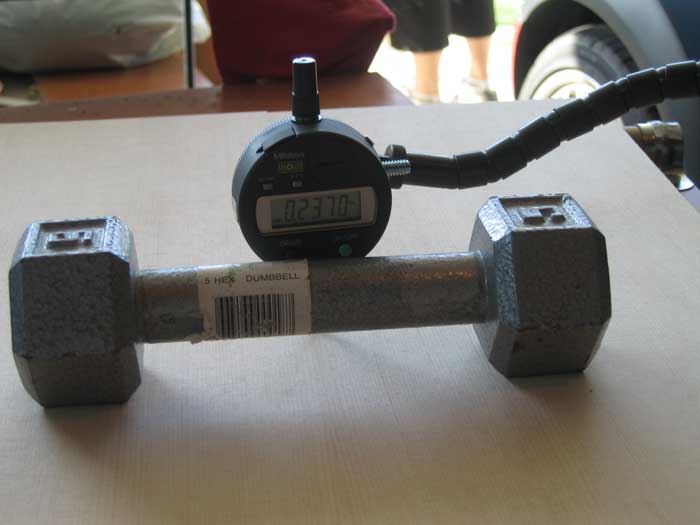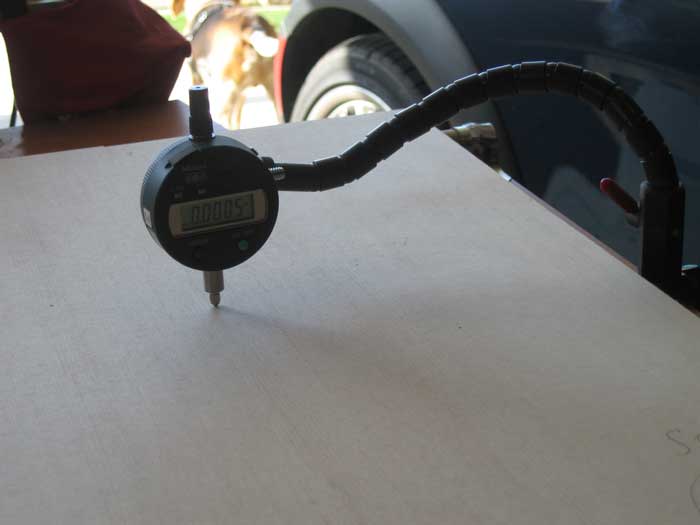The variables involved:
Length, width, and thickness of blank
Span over which it's to be deflected
Weight placed on it
Placement of weight
You can account, in formulae, for differing physical dimensions of a board. That said, wood isn't a super-homogeneous material so it's far more desirable to just use the same dimensions every test which will give directly comparable numbers across all setups.
The span over which the deflection is tested can easily be held constant. As well, to make sure the setup is 'honest' the span should be reasonably sharp (ie: you've got a cleaner span if your two supporting points are pieces of angle rather than two large-diameter pipes since on the pipe setup the endpoints move as soon as there is deflection)
Constant weight is pretty easy with a digital scale. If the weight used is relatively large and accurate to within X grams then a good margin of safety can be assumed.
The last variable is ignored by a lot of the setups, and it's really important. The weight should be applied cleanly to the exact center of the blank and distributed in some agreed upon way (ie: On a 3" circle of MDF or somesuch). If the weight isn't applied the exact same way every time, the results are much less meaningful.
Based on all that science stuff, the setup I plan on using (barring someone proposing a simpler way to get good results):
-Two pieces of aluminum angle placed peak up a set distance apart on the test rig.
-A 5 lb weight placed on an acrylic or MDF base which is located dead center on the blank (so weight is always similarly distributed). A beefy piece of steel round-bar would self-center and do the trick, as well, though it might be a hassle for others to acquire compared to 5lbs of random weight.
-Blanks will be milled to constant thickness, width, and length. I'm weighing the pros and cons of testing pre or post join. It's easier to prepare the blanks to set dimensions pre-join (smaller equipment needed), but testing lateral stiffness would be a lot harder on an unjoined blank.
-Deflection will be tested with a standard gauge, fixed in the test right and properly calibrated.
I'm thinking 16" span would work well on a setup to test lateral and longitudinal stiffness of joined blanks. Any thoughts?
|



